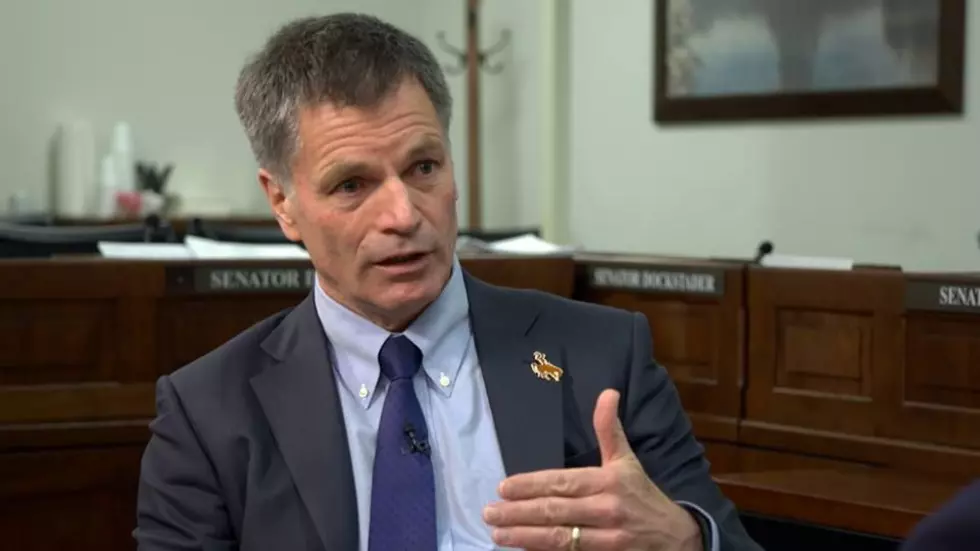
Gov. Gordon’s Carbon Capture Plan Is An Expensive Failure
At the Western Governors’ Association's annual meeting, Governor Mark Gordon was elected as chairman.
As the new Chair, Governor Gordon identified carbon capture utilization and sequestration as his Initiative.
Governor Gordon stated, “Our world needs energy and a clean environment–neither is well served if we are not honest about consequences and challenges. Ignoring CCUS as a viable option to decarbonize the grid creates an energy gap. Shuttering coal-fired power plants before alternative resources are fully developed will exacerbate power shortages, brownouts and blackouts, higher fuel costs and higher-priced electricity.”
But the carbon capture “solution” is not a solution. There is not even a problem.
1. Carbon Capture's Expensive Failure
After billions of dollars have already been spent over decades with no actual carbon capture success. The Petra Nova coal plant in Texas finally closed for good last year. It was a complete failure.
The San Juan Generating Station in New Mexico was once the biggest capture project in the world. It's closing.
The U.S. Department of Energy spent $6.9 billion on the feasibility of CCS for coal. Nothing came of it.
2. Carbon Capture Takes A Lot Of Energy.
CCS takes a new power plant to run the system. That's using more energy to get rid of what they're trying to get rid of.
Governor Gordon wants Wyoming to team up with Colorado on direct capture.
Those systems are expensive to create. Require a lot of energy to run and doesn't actually capture enough to make any meaningful difference.
3. Carbon Capture Actually Increases Emissions... Wait, what?
The way these systems are currently set up they actually produce more CO2 than the system removes.
If they think that the power to run the system can be run by wind farms, they are sadly mistaken.
“Succesful” capture projects only exist at facilities where the carbon is injected into existing wells to extract more oil. This is referred to as “enhanced oil recovery.”
4. Past Storage Failures
Failure during injection has called blowouts that resulted in large amounts of CO2. leaking back into the air.
A CO2 pipeline in Mississippi ruptured last year. All that time, money, and resources, for what?
Let's add to all of these reasons that we are doing it for NOTHING.
CO2 is NOT a pollutant.
The state of Wyoming is capturing and sequestering one of the most important gasses necessary for life on this planet.
For some reason, this gas is being treated as a harmful pollutant. It will be captured and stored underground in the hopes that it never escapes into the atmosphere.
Perhaps the people who are afraid of this gas have never considered all of the evidence. Consider the scientific study below.
About 70% of the Earth’s post-1980s vegetative greening trend has been driven by CO2 fertilization. More greening has offset or reversed 29% of recent anthropogenic CO2 emissions. Greening also has a net cooling effect on surface temperatures.
Earlier this year we highlighted a study (Haverd et al., 2020) asserting rising CO2 and warming are the dominant drivers of Earth’s strong post-1980s greening trend. This greening expands Earth’s carbon sink so profoundly that by 2100 the greening of the Earth will offset 17 years (equivalent) of anthropogenic CO2 emissions.
A 17% offset over 80 years, or net CO2 emissions reversal, would easily supplant the effectiveness of Paris climate accord CO2 mitigation policies.
So according to a study by a major university, CO2 makes the planet greener by promoting plant growth. The more plants, and the bigger they are, the less the planet warms.
But that's just one study. Let's look at another. This one is rather high-tech.
New Paper: CO2 Rise + Warming Are 91% Responsible For The Earth’s Accelerated Greening Trend Since 1990.
Satellite observations indicate the Earth has become much greener in recent decades. According to scientists, the overwhelming majority of the “significant increases in tropical forests and the forests of North America, Eurasia, and China” since the early 1990s can be attributed to the combination of CO2 fertilization (56%) and climate change (35%).
I find that when I tell people about this there is skepticism. That's probably because they have only been told one side of the story.
The scientist that has conducted these studies and the institutions they work for is not a minority nor are they minor. It is simply a lie that 97% of scientists agree.
Let's have a look at a major publication that recently wrote about CO2 and how it causes the greening of our planet.
A new Peer-Reviewed study in Science Mag. reveals the greening of the Earth by rising CO2 levels
The vegetation-climate loop
Just as terrestrial plant biomass is growing in response to increasing atmospheric CO2, climate change, and other anthropogenic influences, so is climate affected by those variations in vegetation. Forzieri et al. used satellite observations to analyze how changes in leaf area index (LAI), a measure of vegetation density, have influenced the terrestrial energy balance and local climates over the past several decades. An increase in LAI has helped to warm boreal zones through a reduction of surface albedo and to cool arid regions of the southern hemisphere by increasing surface evaporation. Furthermore, more densely vegetated areas displayed a greater capacity to mitigate the impact of rapid climate fluctuations on the surface energy budget.Science, this issue p. 1180
So why doesn't the news media sit up and take notice when a scientist screams out, "YOU'RE GETTING IT WRONG!"
The term “carbon pollution” is a deliberate, ambiguous, disingenuous term, designed to mislead people into thinking carbon dioxide is pollution. It is used by the environmentalists to confuse the environmental impacts of CO2 emissions with the impact of the emissions of unwanted waste products of combustion. The burning of carbon-based fuels (fossil fuels - coal, oil, natural gas - and biofuels and biomass) converts the carbon in the fuels to carbon dioxide (CO2), which is an odorless invisible gas that is plant food and it is essential to life on the planet. (ICECAP).
Take your time and read what these scientists and major institutions have to say. Since you have probably heard only one side of the story your entire life you might have to give yourself a little time to process what you are reading.
Always have as much information as you can before you decide.
Breathtaking Fall Sunsets From Across Wyoming
More From Wake Up Wyoming









